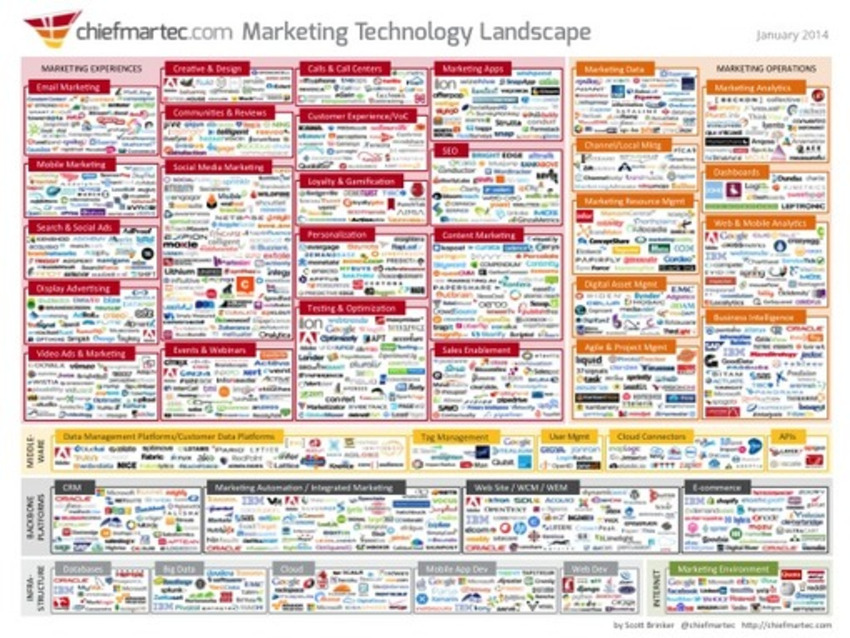Advanced/ Condensed...
Six classes of marketing technology seemed to logically fit together into a semblance of meaningful structure:
-- > Internet services such as Facebook, Google, and Twitter that underlie today’s marketing environment.
-- > Infrastructure such as databases, big data management, cloud computing, and software development tools.
-- > Marketing Backbone Platforms such as CRM, marketing automation, WCM, and e-commerce engines.
-- > Marketing Middleware such as DMPs, CDPs, tag management, cloud connectors, user management, and API services.
-- > Marketing Experiences — more specialized technologies that directly affect prospects and customers across their lifecycle, such as advertising, email, social media, SEO, content marketing, A/B testing, etc.
-- > Marketing Apps — the “front-office” of modern marketing.
-- > Marketing Operations — the tools and data for managing the “back-office” of marketing, such as analytics, MRM, DAM, and agile marketing management.
Here’s the highlight reel of what [the author] found most interesting while working on this:
1. Marketing Backbone Platforms and Marketing Middleware. Platforms are software that every marketer needs — a CRM, a core web content/experience system, and at least basic marketing automation (i.e., campaigns and customer journey management). Middleware is the “software glue” that makes it even easier for multiple, different products to work together. Combined, these platforms and marketing middleware make it increasingly manageable to orchestrate diverse marketing software products into a cohesive stack. Each business will be better able to tailor a marketing technology portfolio that best serves their mission.
2. The Emergence of the Marketing Apps Category. I believe there’s a new category of marketing software that’s emerging for marketing apps. These products let marketers produce interactive experiences, rather than static content, to engage their audience.
3. Consolidation and Diversification in Marketing Automation. The second largest category of products in this landscape is marketing automation/integrated marketing platforms, with 51 different vendors. Many of these are new ventures or expansions of vendors from other categories (especially email marketing). And there are undoubtedly more that I inadvertently overlooked (my apologies). It’s a big category.
4. “Ad Tech” in the Minority in the Marketing Technology Landscape. There’s still no denying that the vast majority of marketing technology innovation is happening outside the context of advertising. This is indicative of — and directly enabling — the seismic shift of marketing away from advertising to experience-driven marketing.
5. A Rich Collection of Agile Marketing Tools. Finally, I’m excited by the wonderful set of agile management tools that are available today. Granted, most of these were not designed specifically with marketing in mind. But the ones I selected here can work beautifully in supporting agile marketing. More generally, the growth and innovation with these products speaks to the increasing traction that agile and lean management philosophies are gaining across more and more organizations.
___________________________________
► Receive a FREE daily summary of The Marketing Technology Alert directly to your inbox. To subscribe, please go to http://ineomarketing.com/About_The_MAR_Sub.html (your privacy is protected).



 Your new post is loading...
Your new post is loading...









What an impressive infographic ! I mean Supergraphic